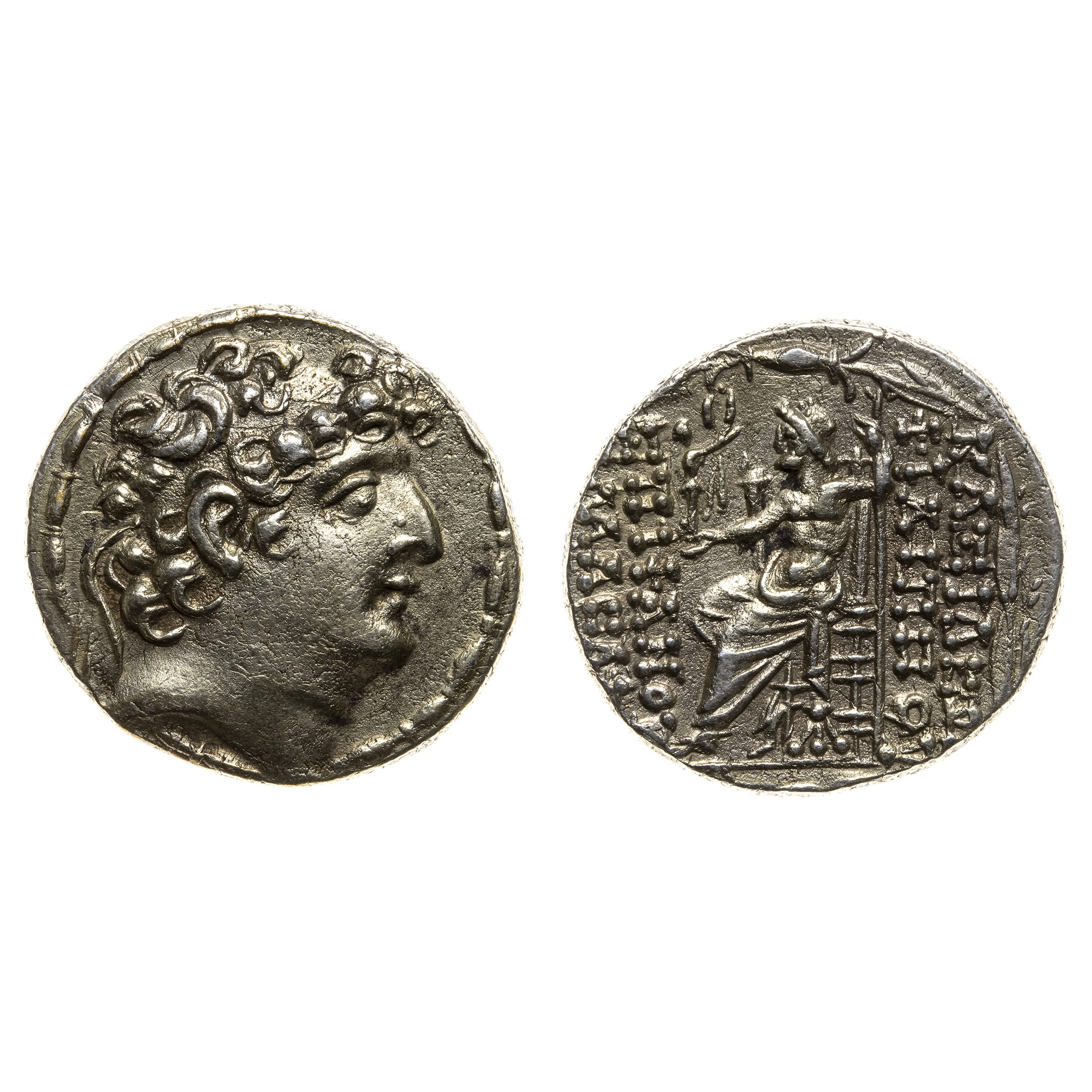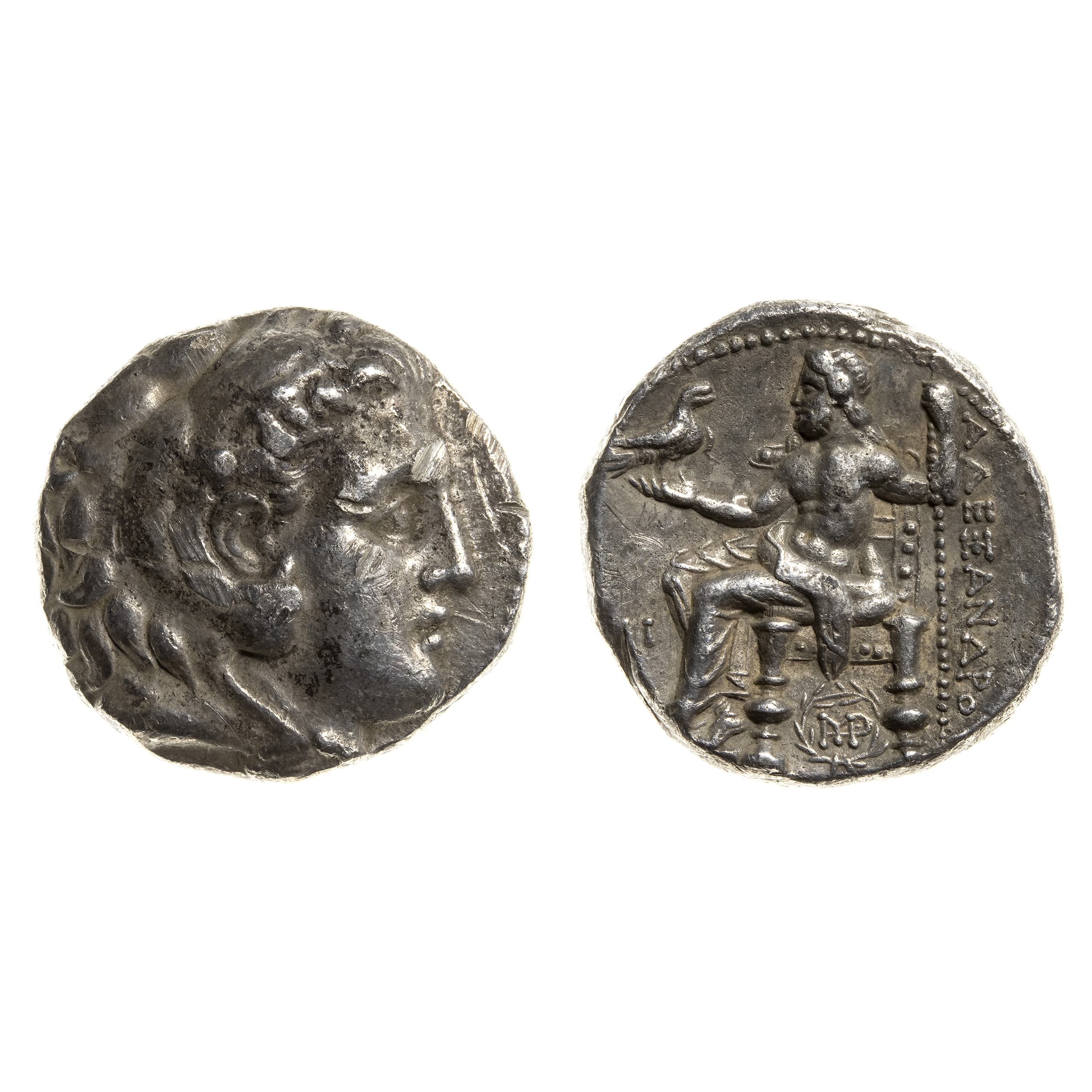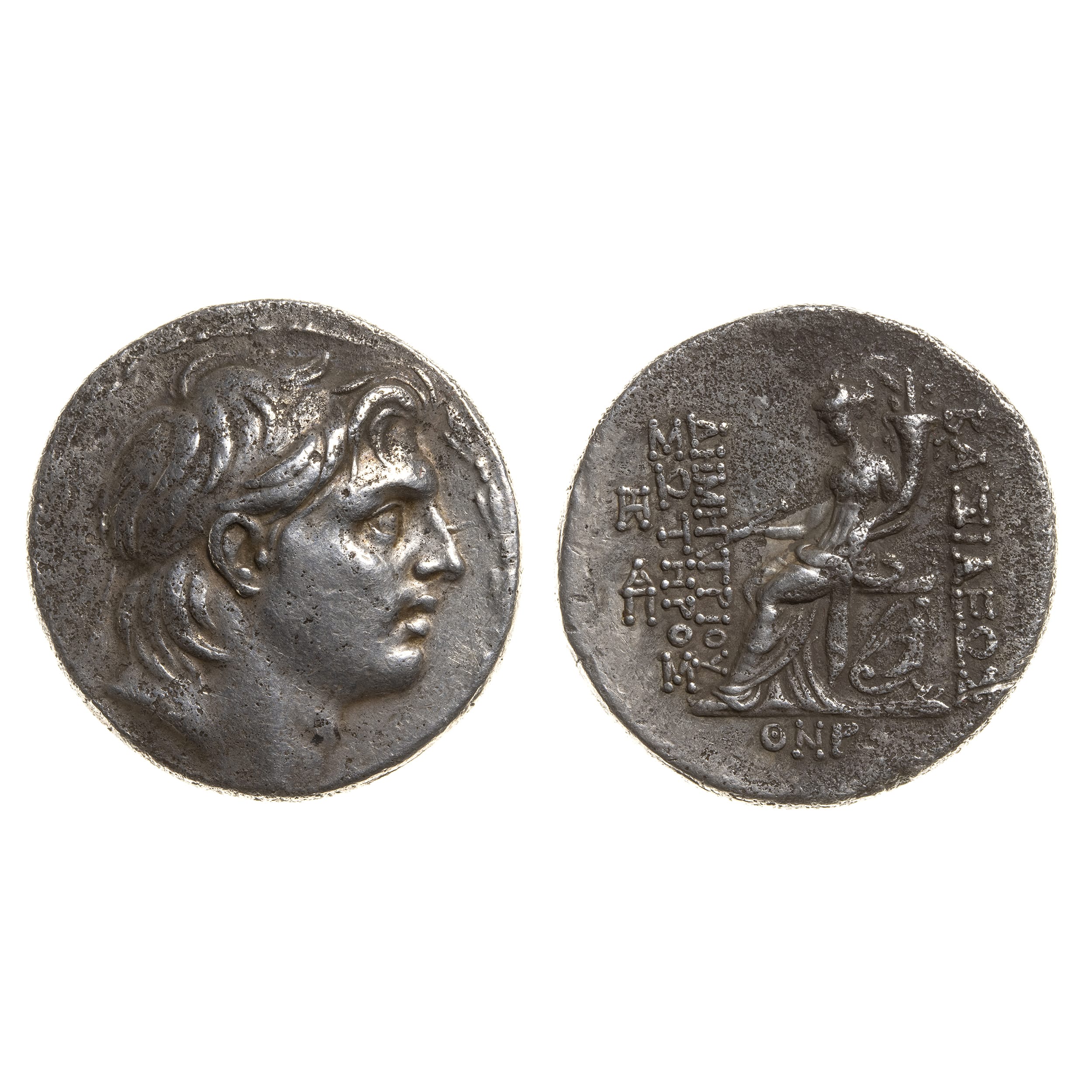Seleukid Kings of Syria, Seleukos I Nikator AR Tetradrachm. Susa, circa 305-295 BC. Head of Seleukos I right, wearing helmet covered with panther skin and adorned with bull's ears and horns, panther skin tied around neck / Nike standing right, wearing peplos, crowning trophy of Macedonian arms set on sapling tree, from which branch sprouts near base; ΒΑΣΙΛΕΩΣ ΣΕΛΕΥΚΟΥ around, monogram in lower middle field. SC 173.4; HGC 9, 20. 17.44g, 29mm, 8h. Near Extremely Fine. The trophy series of Seleukos was issued over an extended period, and used 67 obverse dies and at least 93 reverses that we are aware of. The type is generally assumed to commemorate the victories of Seleukos as he pushed eastwards into India, occupying territory as far as the Indus, and eventually waging war against the Mauryan Empire. This campaign against Chandragupta Maurya was however a failure. While there is no record of what transpired to prevent Seleukos achieving his aims, the two leaders eventually reached an accord whereby Seleukos ceded some of his easternmost territory in exchange for a gift of 500 war elephants. The massive beasts were to play a significant role in the coming wars of the Diadochi, in particular at the Battle of Ipsos in 301 BC. The assertion that the trophy reverse commemorates a victory by Seleukos in the east or in the Upper Satrapies, and his subsequent assumption of a the royal title in 305/4 BC is problematic. The dating of the issue was proposed by Kritt (The Early Seleukid Mint of Susa, 1997) and subsequently accepted by the numismatic community seemingly without question. Moreover, the important detail of the trophy's composition is ignored. The trophy is unquestionably built from Macedonian arms, as evidenced by the Vergina Sun (or Argead Star) clearly emblazoned on the shield. That this should therefore represent an eastern victory is impossible, particularly given the inconclusive nature of Seleukos' campaign against Chandragupta, and its stale conclusion. The issue bears far more significance when viewed in the context of a victory over other Macedonians - for which we should look to the battle of Ipsos, in which Seleukos' elephants played a decisive role in the victory over Antigonos.
Seleukid Kings of Syria, Seleukos I Nikator AR Tetradrachm. Susa, circa 305-295 BC. Head of Seleukos I right, wearing helmet covered with panther skin and adorned with bull's ears and horns, panther skin tied around neck / Nike standing right, wearing peplos, crowning trophy of Macedonian arms set on sapling tree, from which branch sprouts near base; ΒΑΣΙΛΕΩΣ ΣΕΛΕΥΚΟΥ around, monogram in lower middle field. SC 173.4; HGC 9, 20. 17.44g, 29mm, 8h. Near Extremely Fine. The trophy series of Seleukos was issued over an extended period, and used 67 obverse dies and at least 93 reverses that we are aware of. The type is generally assumed to commemorate the victories of Seleukos as he pushed eastwards into India, occupying territory as far as the Indus, and eventually waging war against the Mauryan Empire. This campaign against Chandragupta Maurya was however a failure. While there is no record of what transpired to prevent Seleukos achieving his aims, the two leaders eventually reached an accord whereby Seleukos ceded some of his easternmost territory in exchange for a gift of 500 war elephants. The massive beasts were to play a significant role in the coming wars of the Diadochi, in particular at the Battle of Ipsos in 301 BC. The assertion that the trophy reverse commemorates a victory by Seleukos in the east or in the Upper Satrapies, and his subsequent assumption of a the royal title in 305/4 BC is problematic. The dating of the issue was proposed by Kritt (The Early Seleukid Mint of Susa, 1997) and subsequently accepted by the numismatic community seemingly without question. Moreover, the important detail of the trophy's composition is ignored. The trophy is unquestionably built from Macedonian arms, as evidenced by the Vergina Sun (or Argead Star) clearly emblazoned on the shield. That this should therefore represent an eastern victory is impossible, particularly given the inconclusive nature of Seleukos' campaign against Chandragupta, and its stale conclusion. The issue bears far more significance when viewed in the context of a victory over other Macedonians - for which we should look to the battle of Ipsos, in which Seleukos' elephants played a decisive role in the victory over Antigonos.













/208861/Photo1%20data.jpg)

Testen Sie LotSearch und seine Premium-Features 7 Tage - ohne Kosten!
Lassen Sie sich automatisch über neue Objekte in kommenden Auktionen benachrichtigen.
Suchauftrag anlegen